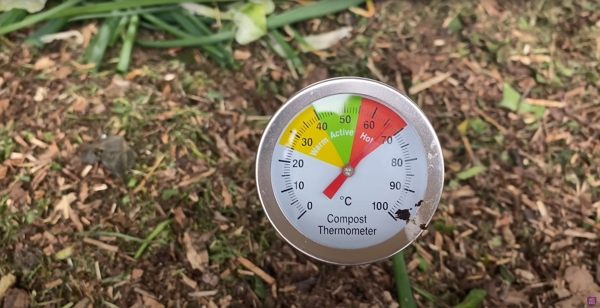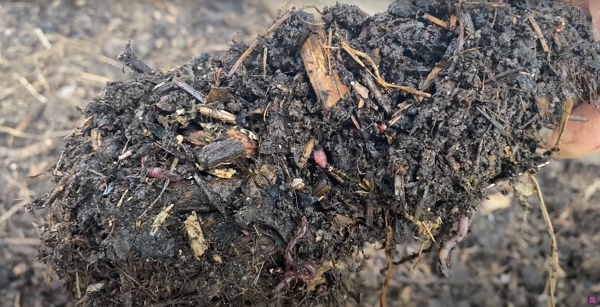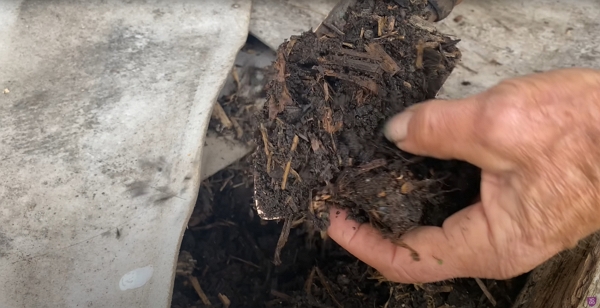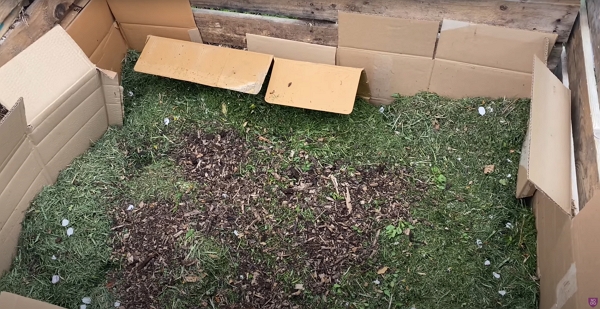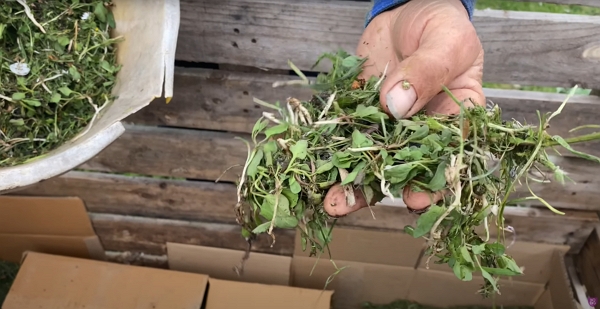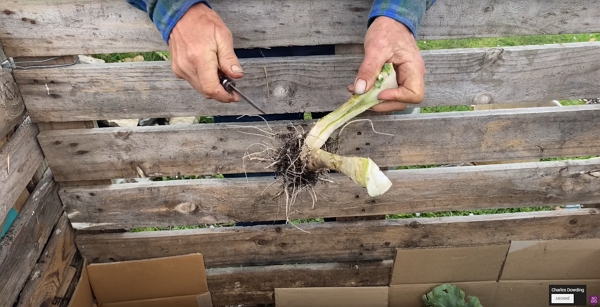Composting can be achieved in various heaps or compost bins. Charles explains to us in this article the options available and the simplest solution is free!
Thanks to Charles Dowding for sharing his wisdom and knowledge! I wrote the following notes watching the video published on Charles Dowding’s channel. You can watch it using this YouTube link.
Size the heap
You need to size your heap according to your garden area and how much waste you will generate from the garden.
In Charles’s case, it is big because he has a big area and in May, time of the vlog shooting, he has a lot of waste, whether it is from the garden or the mowing.
Heat in a compost
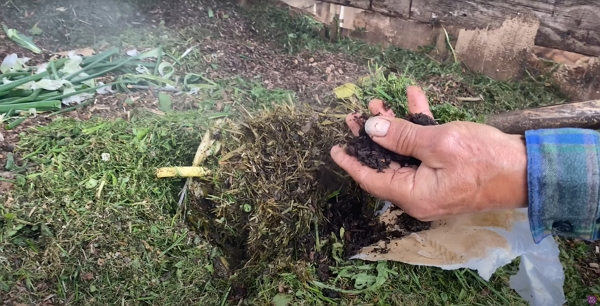
Credits: image taken from Charles Dowding’s vlog Like I wrote in other vlogs, the temperature you want is:
- above 50 °C
- around 60 °C to 70 °C to kill weed seeds
Also, a high temperature will also help producing compost quickly.
To get the heat, you will need green materials, like grass, but not only.
Fresh manure and coffee-grind work as well.
Turning compost heap
It is mandatory to turn compost from a heap to another.
You can make a good compost without turning.
When is compost ready
At five months, it is a little bit too young.
In the above picture, the worms you see were not there before. They are tiger worms which eggs are the materials put in to make the compost and they are helping the composting process.
However, Charles starts using compost after 7 months as the decomposition will continue on the soil.
Sifting compost
Charles only uses the 4 mm sifting tray to prepare potting compost and he only uses it for potting plants.
How much compost and when to spread it
Charles covers the garden areas with 2.5 cm once a year only, anytime of the year.
To make a bed, you will, of course, need a bigger depth to start off.
Another kind of heap
You can build them out of pallets with their bottom stripped off, to make the side much lighter.
Each side is attached to the two connecting other sides with a simple wire at the top and the bottom.
The heaps sit on the ground, not tied to anything.
Inside, you can use cardboard to keep the moisture (when it is very dry in summer for example).
You can throw simply everything.
Weed root can decompose without heat since you keep adding material on top of them.
A lot can go in, such as:
- vegetable waste
- banana skin
- lemon peel
- cardboard waste, as long as it contains no plastic

For more woody or harder material, like the cauliflower stem below, you should cut it in smaller pieces.
Charles shows below how to cut the stem in the length, which is much easier.
Adding woody material is really good to bring more fungal activities, which then helps break down the materials.
Life in the heaps
Wildlife, like mice, toads, frogs, will be found in the heaps.
Also, worms will multiply and work hard to decompose the compost more and more.
Woodchip composting
It is much harder to decompose woodchips. Charles did another vlog about a solution. Use the tag woodchip to find the notes I will have taken in the near future.
Worm farm
Charles has a slow worm (Anguis fragilis) in a worm farm.
Apparently, it eats slugs!
Charles bought 4 kg of worms but it is necessary.
Worm compost is really good for potting.
Go read the notes I took from the trials Charles did that showed how worm compost in the proper amount helped:
